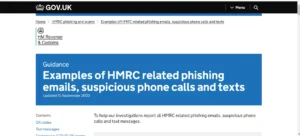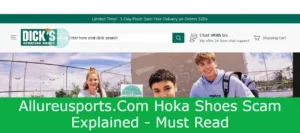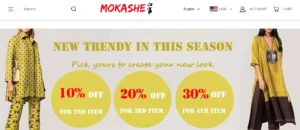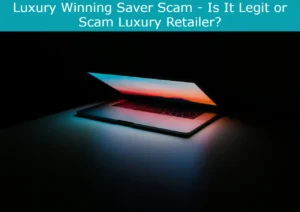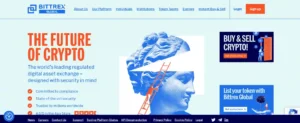Are you aware of the Transunion Canada scam?
It's important to stay informed and protect yourself from fake emails claiming to be from Transunion Canada. These scammers use deceptive tactics to trick unsuspecting individuals into providing personal information or financial details.
By understanding the warning signs and common tactics used by these fraudsters, you can avoid falling victim to their schemes.
In this guide, we will provide you with valuable information on how the Transunion Canada scam works, how to identify a fake email, steps to take if you receive a suspicious email, tips for protecting yourself, and resources for further assistance.
Stay vigilant and keep your personal information secure.
How the Transunion Canada Scam Works
To understand how the Transunion Canada scam works, let's take a closer look at how scammers use fake emails to deceive you.
Scammers often send emails that appear to be from reputable companies like Transunion Canada, tricking you into providing personal information or clicking on malicious links.
These emails may claim that there's an issue with your credit report or offer a free credit score.
To protect yourself, always verify the sender's email address and avoid clicking on suspicious links or providing personal information through email.
Warning Signs of a Fake Transunion Canada Email
When it comes to identifying a fake Transunion Canada email, there are several warning signs to watch out for.
One of the most common red flags is poor grammar and spelling mistakes in the email.
Additionally, pay attention to the sender's email address – if it seems suspicious or unrelated to Transunion Canada, it could be a fake.
Lastly, be cautious of emails that urgently request personal information or financial details, as legitimate companies like Transunion Canada would typically handle such matters through secure channels.
Poor Grammar/Spelling
If you receive a fake Transunion Canada email with poor grammar and spelling, be cautious as it's likely a scam. Poor grammar and spelling in an email can have a significant impact on the credibility of the sender. It suggests a lack of professionalism and attention to detail, which are qualities you'd expect from a legitimate organization like Transunion Canada.
The potential consequences of falling for a scam email can include identity theft, financial loss, and damage to your credit score. Stay vigilant and always double-check the authenticity of any suspicious emails.
Suspicious Sender Address
Be wary of any email from an unknown sender claiming to be Transunion Canada, as this is a common sign of a fake email. Scammers often use email phishing techniques to create fake email addresses that appear to be from legitimate organizations like Transunion Canada.
One of the warning signs to look out for is a suspicious sender address. Pay attention to the sender's email address and check for any inconsistencies or variations that differ from the official Transunion Canada email addresses.
Urgent Request for Information
If you receive an urgent request for information from Transunion Canada, be cautious as this could be a warning sign of a fake email. Scammers often use urgency as a tactic to pressure victims into providing personal information.
Identifying phishing attempts is crucial to protect yourself from email scams. Remember that Transunion Canada will never ask for sensitive information via email.
Be vigilant, especially if you fall under the common targets for email scams, such as those with high credit scores or individuals who've recently applied for credit.
Common Tactics Used by Scammers in These Fake Emails
Scammers frequently employ various tactics in their fake emails to deceive and defraud unsuspecting individuals.
One common tactic is the use of phishing techniques, where scammers imitate legitimate organizations or individuals to trick recipients into revealing sensitive information, such as passwords or financial details.
Another tactic used is the exploitation of fear and urgency. Scammers create a sense of urgency by claiming that immediate action is required, such as threatening consequences if the recipient fails to respond.
These tactics aim to manipulate victims into acting quickly without questioning the authenticity of the email.
Steps to Take if You Receive a Suspicious Email From Transunion Canada
If you receive an email from Transunion Canada that seems suspicious, it's important to take certain steps to protect yourself from potential scams.
Firstly, carefully examine the email for any signs of phishing or fraudulent activity, such as misspellings or unusual sender addresses.
Secondly, report the suspicious email to Transunion Canada's customer service or fraud department, providing them with all relevant details.
Lastly, ensure the security of your personal information by refraining from clicking on any links or providing any sensitive data in response to the email.
Identifying Scam Emails
To identify a scam email from Transunion Canada, follow these steps:
- Check the sender's email address: Scammers often use email addresses that are slightly different from the official Transunion Canada email address. Look for any misspellings or variations in the domain name.
- Look for generic greetings: Legitimate emails from Transunion Canada usually address you by your name. If the email starts with a generic greeting like 'Dear customer,' it may be a scam.
- Be cautious of urgent requests: Scammers often use urgency to trick you into providing personal information. If the email asks for immediate action or threatens negative consequences, it could be a scam.
- Avoid clicking on suspicious links: Hover your mouse over any links in the email to see the actual URL. If it looks suspicious or doesn't match Transunion Canada's official website, don't click on it.
- Watch out for spelling and grammar errors: Scam emails often contain spelling and grammar mistakes. Legitimate companies like Transunion Canada typically have professional communication.
- Verify with Transunion Canada: If you're unsure about the authenticity of an email, contact Transunion Canada directly through their official website or customer service hotline to confirm if the email is legitimate.
Reporting Suspicious Activity
When receiving a suspicious email from Transunion Canada, the first step to take is promptly reporting the activity.
To ensure your personal information is protected, it's crucial to identify phishing attempts and take appropriate action. Start by not clicking on any links or downloading attachments in the email.
Instead, forward the suspicious email to Transunion Canada's dedicated email address for reporting scams. This will allow them to investigate the incident and take necessary measures to protect their customers.
Protecting Personal Information
To protect your personal information, be proactive if you receive a suspicious email from Transunion Canada by taking the following steps:
- Don't click on any links or download any attachments in the email. These could potentially be malicious and compromise your data.
- Delete the email immediately and don't respond to it. This helps prevent further communication with the scammer.
- Report the suspicious email to Transunion Canada. They can investigate the incident and take appropriate action to mitigate any potential data breaches or phishing attacks.
Tips for Protecting Yourself From Falling Victim to This Scam
To protect yourself from falling victim to the Transunion Canada scam of fake emails, you should be vigilant and take proactive steps.
Start by protecting your personal data by never sharing sensitive information like your social insurance number or credit card details via email.
Be wary of any unsolicited emails claiming to be from Transunion Canada and don't click on any suspicious links or download attachments.
Install reliable antivirus software and regularly update your online security measures to stay protected.
Reporting the Scam to Transunion Canada and Other Relevant Authorities
If you encounter the Transunion Canada scam of fake emails, promptly report it to Transunion Canada and other relevant authorities. Reporting the scam is crucial not only to protect yourself but also to prevent others from falling victim to the same scam.
Here are three important steps you should take when reporting the scam:
- Contact Transunion Canada: Inform Transunion Canada about the scam by calling their customer service or reporting it through their official website. They've dedicated teams to handle such incidents and can provide guidance on further actions.
- Notify your local authorities: Report the scam to your local police department or law enforcement agency. They can investigate the matter and take appropriate legal actions against the scammers.
- File a complaint with the Canadian Anti-Fraud Centre: The Canadian Anti-Fraud Centre is the central agency for collecting information and intelligence on fraud-related matters. They work with law enforcement agencies to prosecute fraudsters and can provide valuable assistance in dealing with the scam.
Resources for Further Information and Assistance in Dealing With Fake Emails
For further information and assistance in dealing with fake emails, utilize Transunion Canada's resources.
Transunion Canada offers valuable resources to help individuals protect themselves from email scams and phishing attempts. On their website, you can find educational materials and articles on email security and phishing prevention. They provide tips on how to recognize fake emails, what to do if you receive one, and how to report it.
Additionally, you can contact Transunion Canada's customer support for further assistance in dealing with fake emails.



